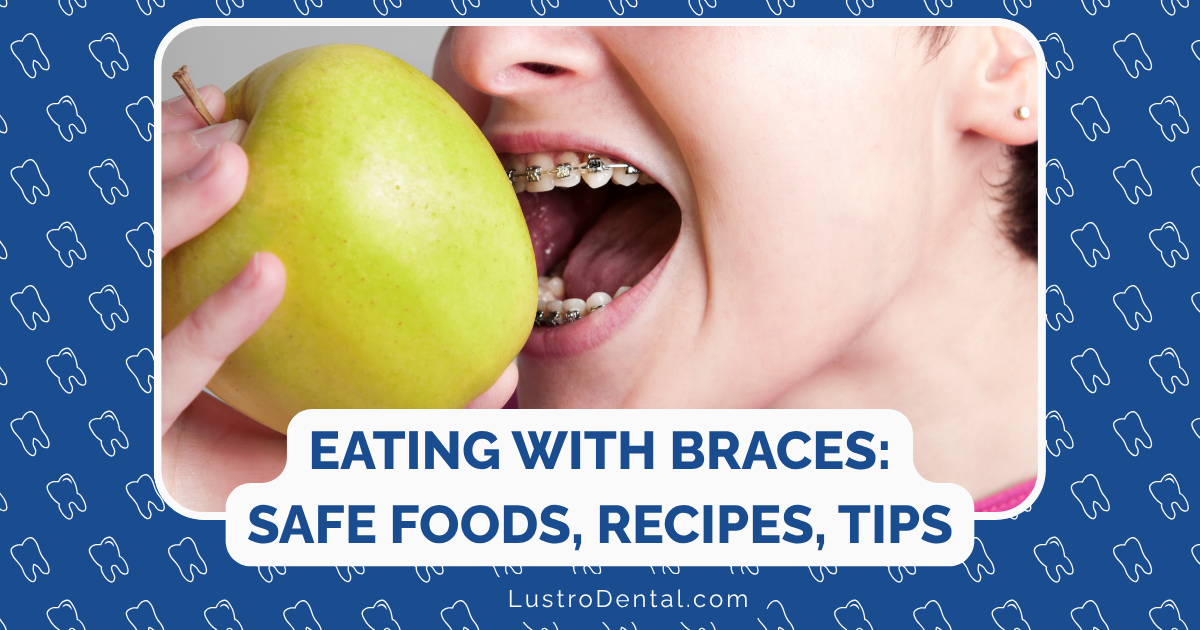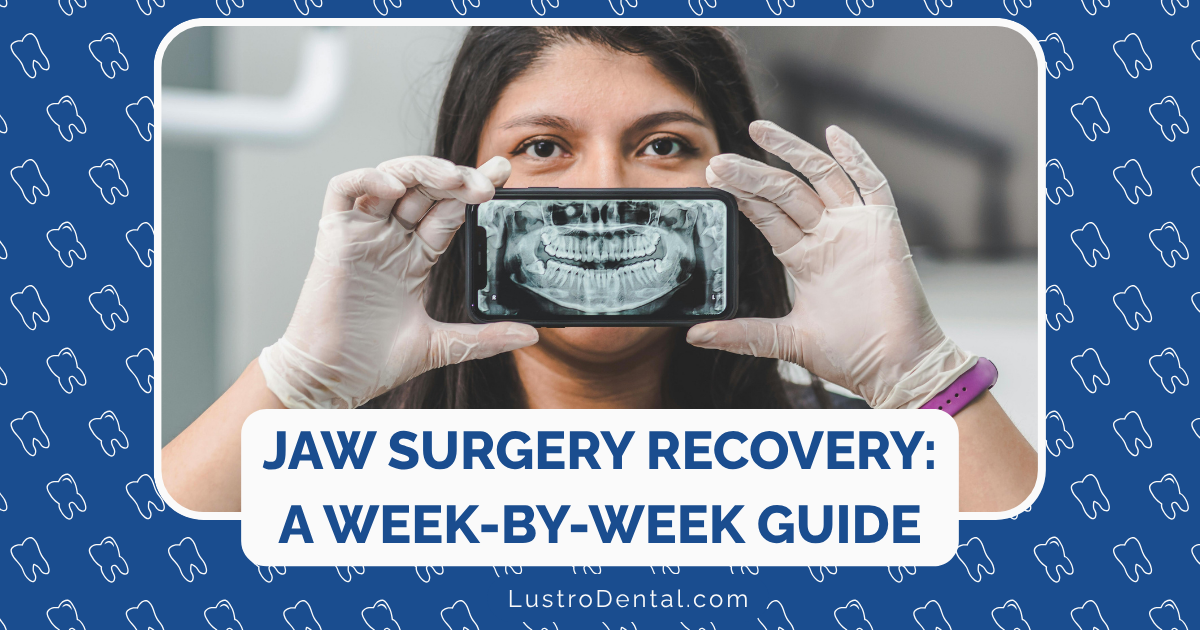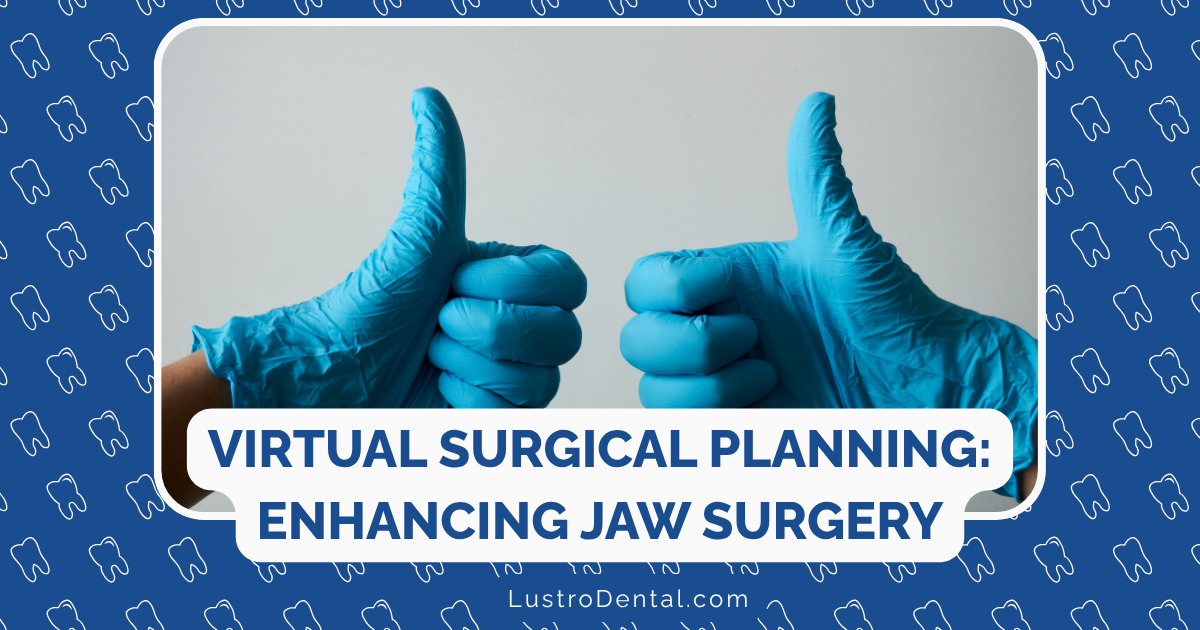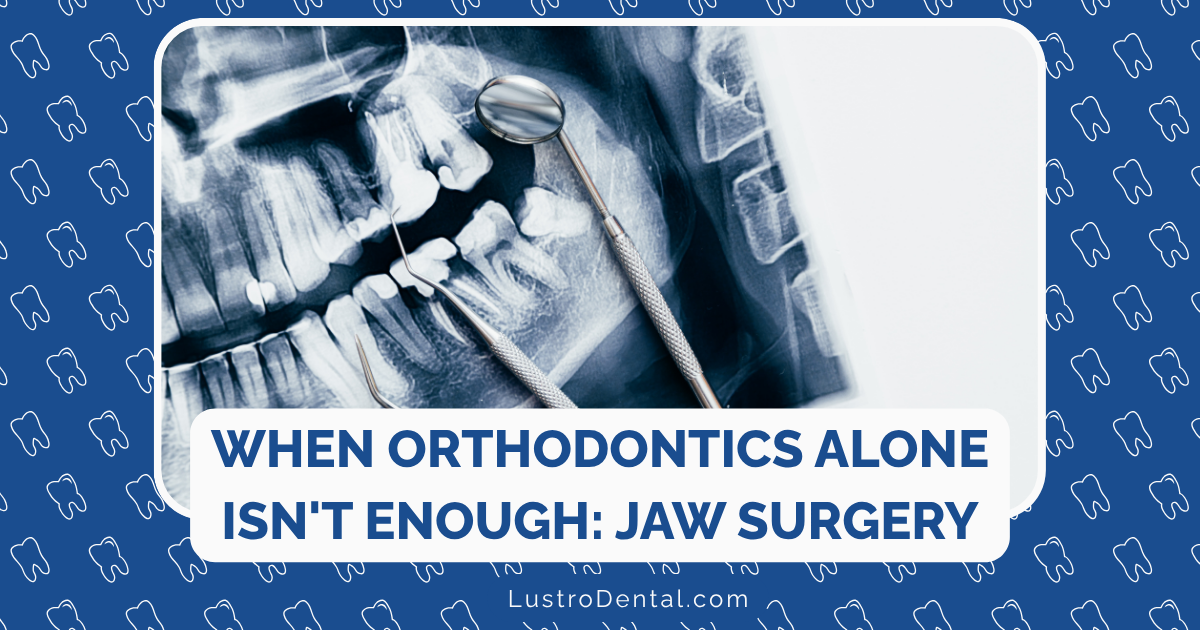Eating with Braces: A Comprehensive Food Guide (With Recipes!)

The moment those braces are fitted, a common question quickly follows: “So…what exactly can I eat now?” As someone who’s not only worked with orthodontic patients for years but also survived my own braces journey, I understand the confusion and frustration that can come with navigating meals with new metal accessories.
The good news? You don’t have to resign yourself to a bland diet of mashed potatoes and applesauce for the next 18-24 months. With some smart food choices and creative recipes, you can enjoy delicious, nutritious meals that won’t damage your braces or leave you in pain.
In this comprehensive guide, I’ll walk you through everything you need to know about eating with braces—from foods to embrace (and avoid) to mouth-watering recipes that are gentle on your orthodontic work but still satisfying for your taste buds.
Understanding Your New Relationship with Food
Before diving into specific recommendations, it helps to understand why certain foods are problematic with braces:
Why Some Foods Are Off-Limits
- Hard foods can break brackets or bend wires
- Sticky foods can get trapped in braces and are difficult to clean
- Chewy foods may dislodge brackets or distort wires
- Very crunchy foods can damage braces components
- Acidic foods may cause discomfort, especially after adjustments
According to the American Association of Orthodontists, damaged braces can extend your overall treatment time by weeks or even months. That cookie might be tempting, but is it worth wearing braces for extra time? Probably not.
The Braces-Friendly Food List
Green Light Foods (Enjoy Freely)
These foods are generally safe for braces and can be enjoyed without modification:
Dairy:
- Yogurt (regular and Greek)
- Soft cheeses (cottage cheese, cream cheese, brie)
- Milk and milk alternatives
- Ice cream and frozen yogurt (without hard mix-ins)
- Pudding and custard
Proteins:
- Eggs (scrambled, poached, soft-boiled)
- Tofu and tempeh (soft-cooked)
- Ground meat (beef, turkey, chicken)
- Flaky fish (salmon, tilapia, cod)
- Beans (refried, well-cooked)
Grains:
- Pasta and noodles
- Rice and quinoa
- Couscous
- Soft breads (no crusty varieties)
- Pancakes and waffles
- Oatmeal and cream of wheat
Fruits and Vegetables:
- Bananas
- Berries
- Avocados
- Applesauce
- Canned fruits (in juice, not syrup)
- Steamed or roasted vegetables (until soft)
- Mashed potatoes
- Sweet potatoes
Other:
- Smoothies and protein shakes
- Soups and broths
- Hummus
- Soft tortillas
Yellow Light Foods (Enjoy with Modification)
These foods can be enjoyed if prepared properly:
Fruits and Vegetables:
- Apples (cut into small pieces or grated)
- Carrots (shredded or cooked until soft)
- Corn (cut off the cob)
- Broccoli and cauliflower (cooked until tender)
Proteins:
- Meat (cut into small pieces or slow-cooked until tender)
- Chicken (shredded or cut into small pieces)
- Nuts (ground or as nut butter)
Grains:
- Crusty bread (remove crust or toast lightly to soften)
- Pizza (avoid the crust or choose thin, softer crust)
Red Light Foods (Avoid)
These foods should be avoided until your braces come off:
Hard Foods:
- Nuts
- Hard candies
- Ice
- Popcorn
- Hard taco shells
- Hard pretzels and chips
- Raw carrots and apples (unless modified as above)
- Pizza crust and bagels
Sticky Foods:
- Caramel
- Taffy and gummy candies
- Chewing gum (unless orthodontist-approved)
- Sticky candy bars
- Dried fruits (unless rehydrated)
Chewy Foods:
- Beef jerky
- Chewy candies
- Licorice
- Chewy bread rolls
Special Considerations: The First Week and After Adjustments
The First Week with Braces
The initial days with braces are typically the most uncomfortable. During this time, focus on:
- Very soft foods: Smoothies, yogurt, mashed potatoes, pudding
- Cool foods: Cold foods can help reduce inflammation and provide relief
- Small bites: Cut everything into tiny pieces to minimize chewing
- Hydration: Drink plenty of water to help with dry mouth from mouth breathing
After Adjustment Appointments
For 2-3 days following adjustment appointments, you may experience increased sensitivity. During these times:
- Return to softer foods temporarily
- Use over-the-counter pain relievers as recommended by your orthodontist
- Try cold foods to numb discomfort
- Avoid spicy or acidic foods that might irritate sensitive areas
Braces-Friendly Recipes by Meal
Now for the fun part—delicious recipes that work perfectly with braces! Each recipe is designed to be nutritious, satisfying, and gentle on your orthodontic work.
Breakfast Recipes
1. Protein-Packed Berry Smoothie Bowl
Ingredients:
- 1 cup frozen mixed berries
- 1 ripe banana
- 1/2 cup Greek yogurt
- 1/4 cup milk of choice
- 1 tablespoon honey or maple syrup
- Optional toppings: chia seeds, smooth nut butter, mashed banana
Instructions:
- Blend berries, banana, yogurt, milk, and sweetener until smooth.
- Pour into a bowl and add soft toppings.
- Eat with a spoon for a satisfying breakfast that requires no chewing.
Why it works: Smoothie bowls provide protein, vitamins, and fiber without requiring significant chewing. The cold temperature can also soothe sore gums after adjustments.
2. Bananas Foster Overnight Oats
Ingredients:
- 1/2 cup rolled oats
- 1/2 cup milk of choice
- 1/4 cup Greek yogurt
- 1 ripe banana, mashed
- 1 tablespoon brown sugar
- 1/4 teaspoon cinnamon
- 1/4 teaspoon vanilla extract
- Pinch of salt
Instructions:
- Mix all ingredients in a jar or container.
- Refrigerate overnight or for at least 4 hours.
- Enjoy cold or warm gently in the microwave.
Why it works: The oats soften overnight, creating a no-cook breakfast that’s easy on braces. The banana adds natural sweetness and a smooth texture.
3. Cloud Eggs with Avocado Toast
Ingredients:
- 2 eggs, separated
- 2 slices of soft bread
- 1/2 ripe avocado
- Salt and pepper to taste
- Optional: soft herbs like chopped chives
Instructions:
- Preheat oven to 350°F (175°C).
- Separate egg whites and yolks, placing whites in a mixing bowl.
- Whip egg whites until stiff peaks form.
- Create two “clouds” of egg white on a parchment-lined baking sheet, making a well in the center of each.
- Bake for 3 minutes, then carefully add a yolk to each well.
- Bake for another 3 minutes until yolks are just set.
- Meanwhile, toast bread lightly (not too crispy) and spread with mashed avocado.
- Top toast with cloud eggs and season to taste.
Why it works: The fluffy egg whites are gentle on braces, while the creamy avocado provides healthy fats and a smooth texture that won’t get stuck in wires.
Lunch Recipes
1. Creamy Tomato Soup with Grilled Cheese Dippers
Ingredients: For the soup:
- 1 tablespoon olive oil
- 1 small onion, diced
- 2 cloves garlic, minced
- 1 can (28 oz) crushed tomatoes
- 2 cups vegetable broth
- 1/4 cup heavy cream
- 1 tablespoon fresh basil, chopped (or 1 teaspoon dried)
- Salt and pepper to taste
For the grilled cheese dippers:
- 4 slices soft bread
- 4 slices American or cheddar cheese
- 2 tablespoons butter, softened
Instructions:
- Heat oil in a pot over medium heat. Add onion and cook until soft, about 5 minutes.
- Add garlic and cook for 30 seconds.
- Add tomatoes and broth, bring to a simmer, and cook for 15 minutes.
- Use an immersion blender to puree the soup until smooth.
- Stir in cream and basil, season with salt and pepper.
- For the dippers, make grilled cheese sandwiches, then cut into strips.
- Serve soup with grilled cheese dippers on the side.
Why it works: Smooth soup is perfect for braces, while the grilled cheese provides protein and calcium without being too hard or chewy.
2. Mediterranean Hummus Wrap
Ingredients:
- 1 soft flour tortilla
- 3 tablespoons hummus
- 1/4 cup cucumber, grated or finely diced
- 2 tablespoons feta cheese, crumbled
- 2 tablespoons roasted red pepper, diced small
- Small handful of baby spinach
- Optional: 2 ounces shredded rotisserie chicken
Instructions:
- Warm tortilla slightly to make it more pliable.
- Spread hummus evenly across the tortilla.
- Layer remaining ingredients in the center.
- Fold in sides and roll up tightly.
- Cut in half for easier eating.
Why it works: Soft tortillas won’t damage braces, while the fillings are either soft or cut small enough to be safe. The hummus provides a creamy base that helps hold everything together.
3. Quinoa Power Bowl
Ingredients:
- 1 cup cooked quinoa
- 1/2 cup black beans, rinsed and drained
- 1/4 avocado, diced
- 1/4 cup corn kernels
- 2 tablespoons Greek yogurt
- 2 tablespoons salsa (not chunky)
- Handful of soft microgreens or sprouts
- Lime juice to taste
Instructions:
- Layer quinoa in a bowl.
- Top with beans, avocado, and corn.
- Add dollops of Greek yogurt and salsa.
- Sprinkle with microgreens and a squeeze of lime juice.
Why it works: This bowl is packed with protein and fiber from ingredients that are naturally soft or easily mashed if needed. The varied textures and flavors make it satisfying without challenging your braces.
Dinner Recipes
1. One-Pot Creamy Pesto Pasta
Ingredients:
- 8 oz pasta (any short shape)
- 2 cups chicken or vegetable broth
- 1 cup milk
- 2 tablespoons butter
- 2 cloves garlic, minced
- 1/4 cup pesto
- 1/4 cup cream cheese
- 1/4 cup grated parmesan
- Salt and pepper to taste
- Optional: 1 cup spinach, chopped
Instructions:
- In a large pot, combine pasta, broth, milk, butter, and garlic.
- Bring to a boil, then reduce heat and simmer, stirring occasionally until pasta is tender and liquid is mostly absorbed (about 12 minutes).
- Stir in pesto, cream cheese, and parmesan until melted and creamy.
- If using spinach, add now and stir until wilted.
- Season with salt and pepper.
Why it works: One-pot pasta dishes are perfect for braces because the pasta cooks to a tender consistency, and the creamy sauce helps everything slide down easily without getting caught in wires.
2. Slow Cooker Honey Garlic Chicken
Ingredients:
- 1.5 lbs boneless, skinless chicken thighs
- 1/4 cup honey
- 1/4 cup soy sauce
- 3 cloves garlic, minced
- 1 tablespoon rice vinegar
- 1 tablespoon ketchup
- 1/2 teaspoon red pepper flakes (optional)
- 1 tablespoon cornstarch mixed with 2 tablespoons water
- Cooked rice for serving
- Steamed broccoli (cooked until very soft) for serving
Instructions:
- Place chicken in slow cooker.
- Mix honey, soy sauce, garlic, vinegar, ketchup, and pepper flakes in a bowl, then pour over chicken.
- Cook on low for 4-5 hours or high for 2-3 hours.
- Remove chicken and shred with two forks.
- Pour sauce into a small saucepan and bring to a simmer.
- Add cornstarch mixture and cook until thickened, about 1 minute.
- Return chicken to slow cooker and pour sauce over it, stirring to coat.
- Serve over rice with soft steamed broccoli.
Why it works: Slow-cooked meats become incredibly tender and easy to chew. The shredded texture eliminates any need for biting with front teeth, which can be particularly sensitive with braces.
3. Baked Fish with Mashed Cauliflower
Ingredients: For the fish:
- 4 fillets of white fish (cod, tilapia, or sole)
- 2 tablespoons olive oil
- 1 tablespoon lemon juice
- 1 teaspoon herbs de Provence
- Salt and pepper to taste
For the mashed cauliflower:
- 1 medium head cauliflower, cut into florets
- 2 tablespoons butter
- 2 tablespoons cream cheese
- 1/4 cup grated parmesan
- Salt and pepper to taste
- Optional: 1 clove garlic, minced
Instructions:
- Preheat oven to 375°F (190°C).
- Place fish in a baking dish, drizzle with olive oil and lemon juice.
- Sprinkle with herbs, salt, and pepper.
- Bake for 15-20 minutes until fish flakes easily with a fork.
- Meanwhile, steam cauliflower until very tender, about 10 minutes.
- Drain well and transfer to a food processor.
- Add remaining ingredients and process until smooth.
- Serve fish over mashed cauliflower.
Why it works: White fish is naturally flaky and requires minimal chewing. Paired with creamy mashed cauliflower, this meal is gentle on braces while providing lean protein and vegetables.
Snack Recipes
1. Greek Yogurt Parfait
Ingredients:
- 1 cup Greek yogurt
- 1 tablespoon honey
- 1/4 teaspoon vanilla extract
- 1/4 cup soft granola or crushed graham crackers
- 1/4 cup berry compote (see recipe below)
For berry compote:
- 1 cup mixed berries (fresh or frozen)
- 2 tablespoons sugar
- 1 tablespoon water
- 1/2 teaspoon lemon juice
Instructions:
- For the compote, combine berries, sugar, water, and lemon juice in a small saucepan.
- Simmer over medium heat until berries break down and mixture thickens, about 10 minutes.
- Cool completely.
- Mix yogurt with honey and vanilla.
- Layer yogurt, granola, and compote in a glass or jar.
Why it works: The yogurt provides calcium for strong teeth, while the soft granola and berry compote add texture and flavor without challenging your braces.
2. Avocado Hummus with Soft Pita
Ingredients:
- 1 ripe avocado
- 1 can (15 oz) chickpeas, drained and rinsed
- 2 tablespoons tahini
- 2 tablespoons olive oil
- 2 tablespoons lemon juice
- 1 clove garlic
- 1/2 teaspoon cumin
- Salt and pepper to taste
- Soft pita bread, warmed and cut into triangles
Instructions:
- Combine all ingredients except pita in a food processor.
- Blend until smooth, adding water if needed to reach desired consistency.
- Serve with warm, soft pita triangles.
Why it works: This creamy dip is packed with healthy fats and protein. Soft pita bread is gentle on braces, especially when warmed to increase pliability.
3. Chocolate Banana Soft Serve
Ingredients:
- 2 ripe bananas, sliced and frozen
- 2 tablespoons cocoa powder
- 1 tablespoon maple syrup
- 2 tablespoons milk of choice
- Optional toppings: sprinkles, mini chocolate chips, or a drizzle of nut butter
Instructions:
- Place frozen banana slices in a food processor.
- Add cocoa powder, maple syrup, and milk.
- Process until smooth and creamy, scraping down sides as needed.
- Serve immediately with soft toppings if desired.
Why it works: This dairy-free “ice cream” alternative satisfies sweet cravings without the hard chunks or sticky add-ins that can damage braces.
Dessert Recipes
1. No-Bake Chocolate Pudding Cake
Ingredients:
- 1 package chocolate pudding mix
- 1 3/4 cups cold milk
- 1 tub (8 oz) whipped topping, thawed
- 1 package soft chocolate cookies, broken into pieces
- Optional: 2 tablespoons chocolate sauce
Instructions:
- Prepare pudding according to package directions using the milk.
- In a trifle dish or glass bowl, create layers starting with broken cookies.
- Add a layer of pudding, then a layer of whipped topping.
- Repeat layers, ending with whipped topping.
- Drizzle with chocolate sauce if desired.
- Refrigerate for at least 2 hours before serving.
Why it works: The cookies soften as they absorb moisture from the pudding, creating a cake-like texture that’s easy to eat with braces.
2. Berry Cheesecake Mousse
Ingredients:
- 8 oz cream cheese, softened
- 1/3 cup sugar
- 1 teaspoon vanilla extract
- 1 cup berry compote (see snack recipe above)
- 1 cup whipped topping
- Optional: soft graham cracker crumbs for topping
Instructions:
- Beat cream cheese, sugar, and vanilla until smooth.
- Fold in berry compote, leaving some streaks for visual appeal.
- Gently fold in whipped topping.
- Spoon into serving dishes and top with graham cracker crumbs if desired.
- Chill for at least 2 hours before serving.
Why it works: This no-bake cheesecake alternative has all the flavor without the hard crust that could damage braces.
3. Warm Apple Crumble
Ingredients: For the filling:
- 4 large apples, peeled, cored, and diced small
- 1/4 cup sugar
- 1 tablespoon lemon juice
- 1 teaspoon cinnamon
- 2 tablespoons flour
For the topping:
- 1/2 cup rolled oats
- 1/4 cup flour
- 1/4 cup brown sugar
- 1/4 teaspoon cinnamon
- 3 tablespoons butter, melted
Instructions:
- Preheat oven to 350°F (175°C).
- Mix filling ingredients in a bowl, then transfer to a greased baking dish.
- In another bowl, combine topping ingredients until crumbly.
- Sprinkle topping over apples.
- Bake for 30-35 minutes until apples are very soft and topping is golden.
- Serve warm, optionally with vanilla ice cream.
Why it works: The apples are cooked until very soft, and the crumble topping softens slightly during baking, making it easy to eat with braces.
Special Situations and Solutions
Eating at School or Work
When you can’t prepare braces-friendly meals at home:
- Pack your lunch: This gives you complete control over what you eat.
- Invest in a good thermos: Perfect for soups, pasta, and other soft foods.
- Keep emergency supplies: Orthodontic wax, a travel toothbrush, and floss picks can help manage unexpected situations.
- Choose cafeteria foods wisely: Opt for mashed potatoes, pasta dishes, soft sandwiches, and yogurt.
Dining Out with Braces
Navigating restaurant menus:
- Research menus in advance: Many restaurants post menus online.
- Don’t be afraid to ask for modifications: Request softer cooking methods or substitutions.
- Good restaurant choices:
- Italian (pasta, risotto)
- Mexican (soft tacos, refried beans)
- Asian (rice dishes, soft noodles)
- American (mashed potatoes, mac and cheese)
- Foods to avoid when dining out: Crusty bread, pizza, tough meats, raw vegetables, chips and salsa.
Social Events and Parties
Navigating food-centered gatherings:
- Eat before you go: Having something in your stomach reduces temptation.
- Bring a braces-friendly dish: Ensures you’ll have something safe to eat.
- Focus on socializing: Shift the focus from food to connecting with others.
- Party-friendly options: Soft cookies, brownies without nuts, cheese cubes, hummus.
Maintaining Oral Hygiene While Eating with Braces
Proper cleaning is essential when you have braces:
- Rinse immediately after eating: Swish water vigorously to dislodge large food particles.
- Brush after every meal: Carry a travel toothbrush for on-the-go cleaning.
- Use interdental brushes: These small brushes can clean around brackets where regular brushes can’t reach.
- Floss daily: Use floss threaders or orthodontic flossers designed for braces.
- Consider a water flosser: These devices can remove food particles from hard-to-reach areas.
According to the Journal of Orthodontic Science, proper oral hygiene during orthodontic treatment significantly reduces the risk of white spot lesions and gingivitis, which can complicate and extend treatment time.
The Psychological Aspect: Embracing Braces as a Lifestyle
Adjusting to braces involves more than just changing your diet—it’s a mindset shift:
- Focus on the end result: Remember that these dietary adjustments are temporary, but the results will last a lifetime.
- Get creative: Use this time to explore new recipes and cooking methods.
- Join online communities: Connect with others who are going through the same experience.
- Track your progress: Take regular photos to see how your smile is changing.
Conclusion: Thriving, Not Just Surviving, with Braces
Having braces doesn’t mean resigning yourself to bland, boring food. With creativity and planning, you can enjoy delicious, nutritious meals that support your orthodontic treatment rather than hinder it.
Remember that these dietary adjustments are temporary, but the straight, healthy smile you’ll have when the braces come off will last a lifetime. By following the guidelines and recipes in this guide, you’re not just surviving with braces—you’re thriving.
Do you have a favorite braces-friendly recipe? Share it in the comments below to help others on their orthodontic journey!







